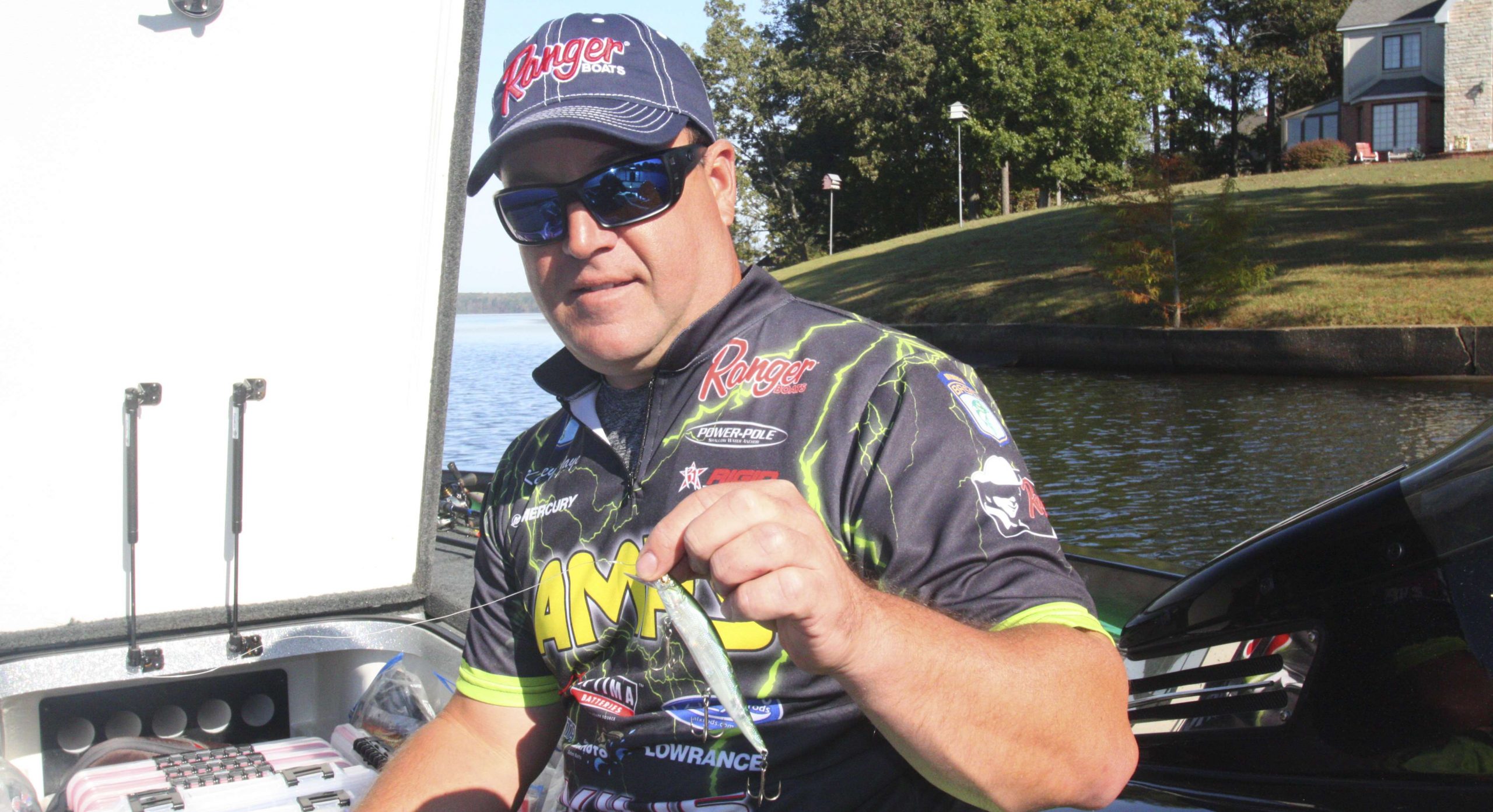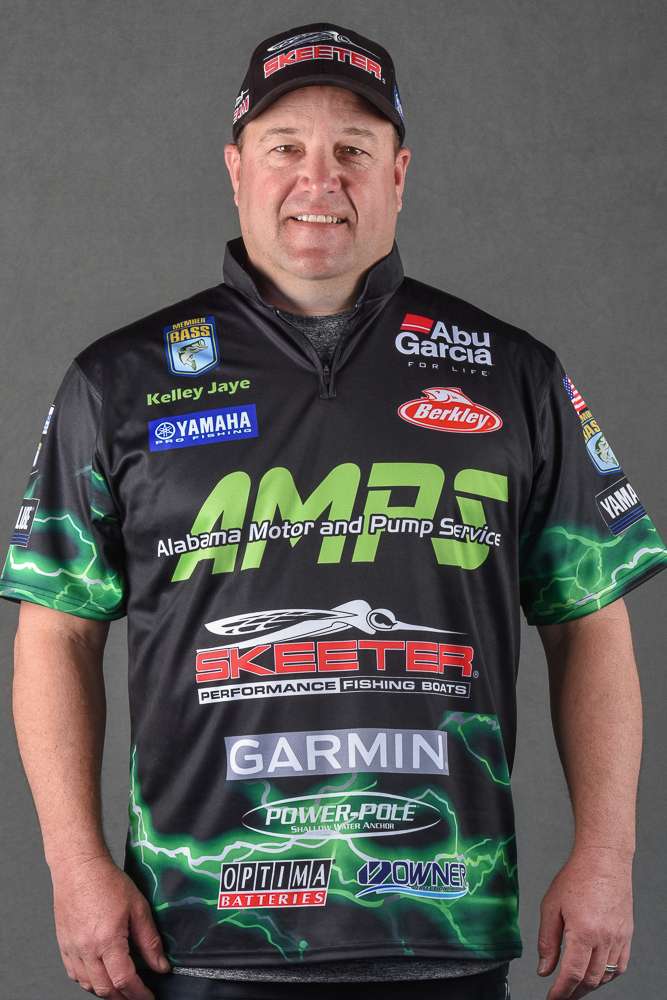
In my six years on the Bassmaster Elite Series, many of my best finishes have come on hard jerkbaits. They’ve occurred on a pretty wide variety of fisheries – everywhere from Florida to Texas to up north – but lots of fishing fans still seem to think that it’s a bit odd. They consider jerkbaits to be very situationally specific, useful only in cold water under prespawn conditions.
If you think that the only way to fish a jerkbait is to twitch it, take a sip of coffee, and let it sit, you’re missing out on its full capabilities. Likewise, if you put them away for the year once the fish hit the beds, you’re missing out on one of the best tools in your boat.
Once you get past the initial shock, you’ll realize that it’s ridiculous to believe that the jerkbait bite is limited to a small sliver of the calendar. We fish flukes and crankbaits and spinnerbaits all year long and nobody bats an eye. Why should jerkbaits be any different? Bass don’t swim up to them, consult their calendars, and then turn away. If anything, as the water heats up the fish become more aggressive, which just means that you should work it faster. It might not be an ideal lure in the heat of the summer when the fish move offshore, but I had a great hot weather tournament on Toledo Bend fishing jerkbaits around docks when most of the competition was out deep.
Their versatility is underrated, but jerkbaits will still break your heart sometimes. Big fish will flash on them or come unbuttoned after they’re hooked, but on balance the successes outweigh the negatives if you follow some simple rules.
The first rule is to use the right lure. I’ve generally narrowed it down to four different models: A SPRO McStick, a Megabass Vision 110, an old school Rattlin’ Rogue and a Lucky Craft Pointer. You’ll have to let the fish tell you which one they want on any given day, but there are some general rules. Everything’s bigger in Texas, so when I’m down there I usually start with the Rogue, which often seems to produce bigger fish. When I’m up north in smallmouth country, I’ll go with a smaller bait, like the SPRO or the Megabass. Don’t hesitate to tweak the lures, too. When smallmouth are shy in super-clear water sometimes I’ll put a smaller hook in the middle and increase the size on each end. That seems to get me more bites.
I also have a few “oddball” lures, ones that are either smaller or larger than my typical tournament-sized models, for specific situations. At Sam Rayburn I caught about half of the fish I weighed in on a Megabass Kanata, which is over 6-inches long and weighs a full ounce. It might seem like something out of a saltwater angler’s arsenal, but it’s still smaller than many of the swimbaits they throw down there. We’re not in this business to catch little ones, so if you can trigger bigger bites with a bigger lure, you’d be a fool not to tie one or more of them on.
While I carry lots of jerkbaits in my boat, I tend to keep the colors pretty simple: I’ll have a Pro Green or Ghost Minnow, a shad pattern (with some white in it), and for more stained water a gold one with a black back and an orange belly.
Just because you have the right jerkbait tied on doesn’t mean it’ll work everywhere on a given lake. You still have to pattern the fish. I’ve made three Elite Series cuts at Toledo Bend with a jerkbait, but other than the lure no two were the same. One was on rock, one was on piers and the third was on points.
The other mistake many anglers make is that they use the wrong rod – that’s almost as bad as not throwing a jerkbait in the first place. I designed a signature series model for ALX that will make you a better jerkbait fisherman. It better – I probably drove the rod designers there nuts as we went through a ton of different prototypes for a year, but in the end we got it right. It’s a 6-foot, 9-inch medium-action, and it’s extremely light. What sets it apart from the competition is that it has a fast tip with a relatively soft backbone. The goal with your jerkbait is to get it to walk like a Zara Spook, and if your tip is too limber you’ll pull it rather than twitch it. By making it with a fast tip, we improved your ability to make the lure dance.
I pair my rod 5.3-ounce Lew’s Team Pro Magnesium baitcasting reel with a 7.5:1 gear ratio. I know that goes against the conventional wisdom that you need a slow reel for jerkbaiting, but most of the year I’m working the lure pretty fast once it gets down to my desired depth. I also tend to use heavier line than a lot of other pros. Instead of the 8- and 10-pound test you’ve been told is necessary, I use 12-pound fluorocarbon for smallmouth and 14 for spots and largemouth. With the way I work the bait if I go any lighter the line tends to get tangled around the hooks.
I have at least a couple of jerkbaits tied on year-round, and you should, too. Once you develop confidence in it, you’ll be using it even when others wouldn’t consider one. Some of the most satisfying tournaments of my career have been Southern Opens on Toho and the Harris Chain. Down in Florida, if you’re not fishing around other people, you’re probably not in the right area, so as I looked at my competition I saw that almost all of them were punching and flipping. They wanted to get their lures down into the grass. Meanwhile I was catching my fish over the grass with a jerkbait.
I was close enough to some of my competitors that I could hear some other anglers watching me comment that they didn’t even have a jerkbait in the boat. Don’t be that guy. Some of the best times to throw a jerkbait are when no one else would even consider one.





